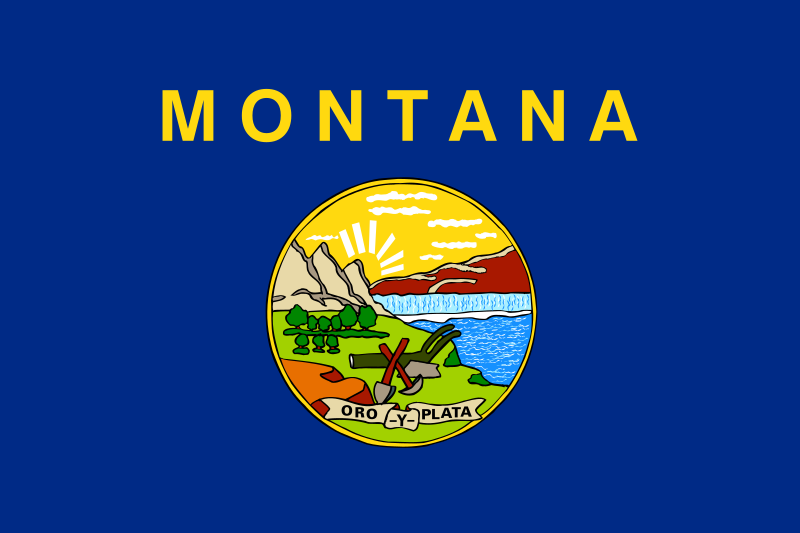Tag: Redistricting
-
Montana becomes last state to enact legislative districting boundaries after the 2020 census

Montana enacted new legislative district boundaries on Feb. 22 when the Montana Districting & Apportionment Commission submitted its final plan to the secretary of state. The maps will take effect for Montana’s 2024 state legislative elections. The commission had voted 3-2 to approve its final plan on Feb. 11. The commission’s nonpartisan chairperson, Maylinn Smith,…
-
Federal three-judge panel rules South Carolina’s 1st Congressional District unconstitutional

On January 6, 2023, a federal three-judge panel ruled that South Carolina’s 1st Congressional District was unconstitutional and enjoined the state from conducting future elections using its district boundaries. The panel’s opinion said, “The Court finds that race was the predominant factor motivating the General Assembly’s adoption of Congressional District No. 1… Plaintiffs’ right to…
-
Sixty-eight legislative districts in five states were either renamed or eliminated after the 2020 census

As state legislatures nationwide convene for their first sessions after the 2022 elections, 68 legislative districts in five states were either renamed or eliminated and no longer exist. Forty-six of the 68 renamed or eliminated districts are in Vermont, one of three New England states—along with Massachusetts and New Hampshire—that include the town as part…
-
Montana Districting and Apportionment Commission submits final legislative district boundary proposal to legislature

The Montana Districting and Apportionment Commission (MDAC) voted 3-2 to submit its final legislative district boundary proposal to the legislature. The commission’s nonpartisan chairperson, Maylinn Smith, and two Democratic-appointed commissioners voted to approve the map, and the two Republican-appointed commissioners voted against it. According to Nicole Girten of the Daily Montanan, “The legislature will have…
-
Mississippi lawsuit challenges state’s legislative districts

The Mississippi State Conference of the NAACP and five Mississippi voters filed a lawsuit in federal district court on Dec. 20 challenging the state’s newly enacted legislative district map. The suit alleges that the boundaries the legislature enacted in March 2022 violate the 1965 Voting Rights Act and “illegally dilute the voting strength of Black…
-
New York judge dismisses petition to compel the state’s redistricting commission to submit new congressional, legislative maps for use in 2024

Albany County Supreme Court justice Peter Lynch dismissed on Sept. 12 a petition seeking to compel the New York State Independent Redistricting Commission (IRC) to submit a second set of redistricting plans for the legislature to consider as part of redistricting after the 2020 census. Several New York state residents filed the petition. The plaintiffs…
-
Primary watch: number of contested state legislative primaries is up 23% compared to 2020

There are 23% more contested state legislative primaries this year than in 2020, including 53% more Republican primaries and 8% more top-two/four primaries. Democratic primaries are down 10%. These figures include elections in 39 states that account for 5,011 of 6,166 state legislative seats up for election this year (81%). A primary is contested when…
-
Newcomers will represent at least 32% of Vermont’s state legislative seats next year

Fifty-seven state legislative seats up for election in Vermont this year are open, meaning no incumbents filed to run. This represents 32% of the state’s legislature, a marked increase compared to recent election cycles. Since no incumbents are present, newcomers are guaranteed to win all open seats. Vermont restructured its House and Senate during the…
-
4.7% of state legislative incumbents who filed for re-election have lost in primaries

So far this year, 156 state legislative incumbents—39 Democrats and 117 Republicans—have lost to primary challengers. Across the 33 states that have held primaries, 4.7% of incumbents running for re-election have lost, an elevated level of incumbent losses compared to previous cycles. These totals include data from Arizona, Kansas, Michigan, Missouri, Ohio, and Washington, which…
-
Sean Maloney and Alessandra Biaggi running in New York’s 17th Congressional District Democratic primary

Sean Maloney and Alessandra Biaggi are running in the Democratic Party primary for New York’s 17th Congressional District on Aug. 23, 2022. Mondaire Jones (D) has represented the 17th Congressional District since 2021 but is running in New York’s 10th Congressional District this election cycle. Maloney has represented New York’s 18th Congressional District since 2013…

